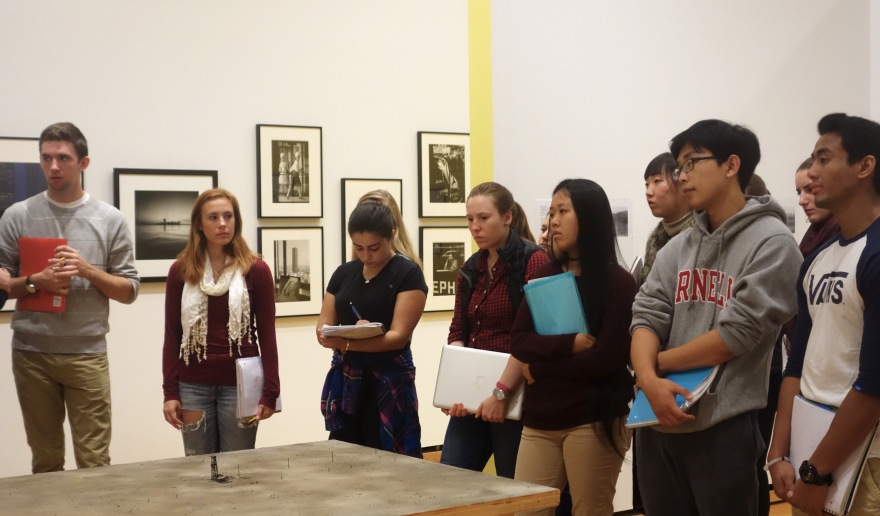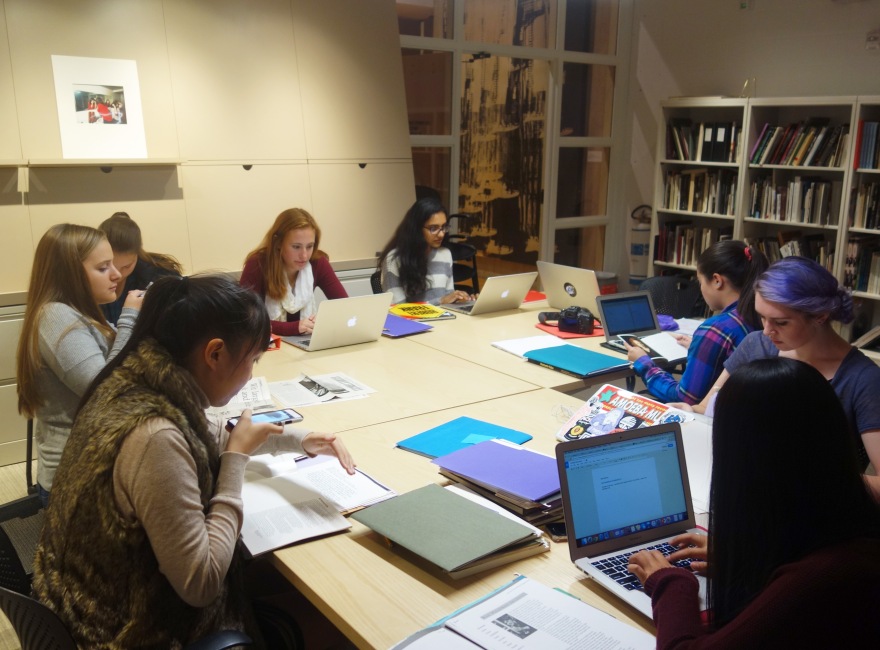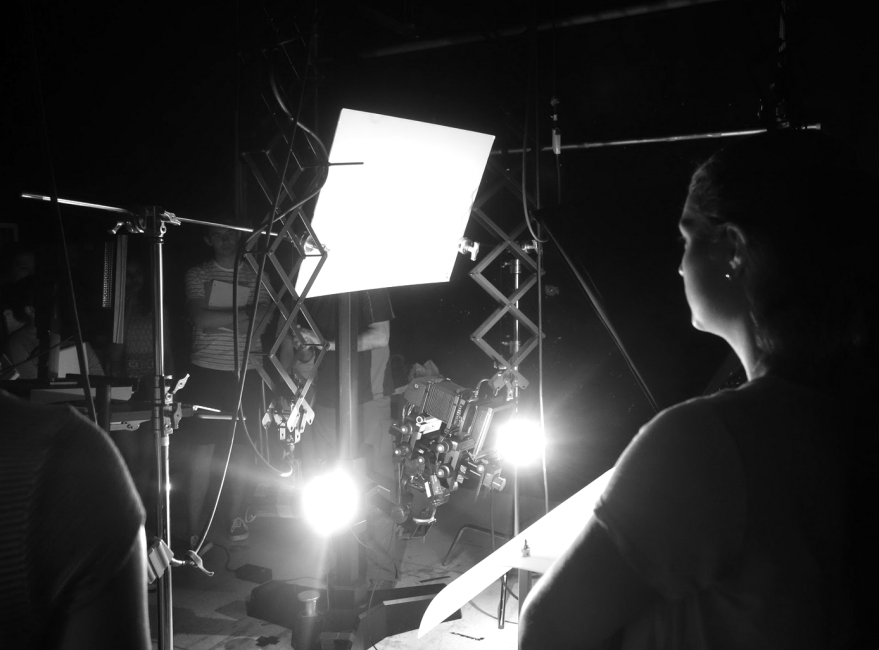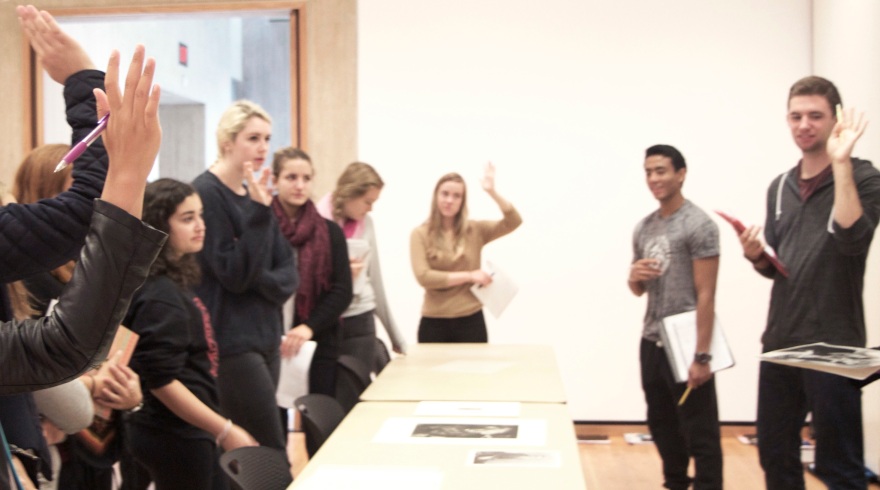Thursday October 15,2015
Interview with Andrea Inselmann: Students’ Transformation to Amateur Curators
Seventeen Cornell students ventured to the far corner of the Arts Quad, through Ithaca’s rain, excited and ready to learn from a professional curator in an effort to enhance their career as amateur curators. On October 15, 2015 our Intersubjective Bodies of Photography class met at the Johnson Museum for an interview with Andrea Inselmann, Curator of Moden and Contemporary Art and Photography at the Johnson, who worked with Sonja Gandert, curatorial assistant at the Johnson, to created the exhibit “The City: Works from the Collection”. Through the interview Inselman explained the process of curating exhibits, with reference to this specific exhibit, and provided the class with advice for selecting images and composing our own exhibit. The beginning of the class period was dedicated to listening to Inselmann’s stories of the process of making “The City: Works from the Collection” and in the end we had the opportunity to ask questions.
An important aspect of the City Exhibit, according to Inselmann, is the organization of the images. On one wall the photographs displayed were all taken of the West Coast, and many of the images depict car traffic, which represents the open feel of the West Coast. Whereas on the opposite wall, the photographs selected were all taken in New York City and they depict the foot traffic and crowed feel of Manhattan. We also learned that in the exhibit images are grouped in smaller numbers by their photographer or aesthetic elements.
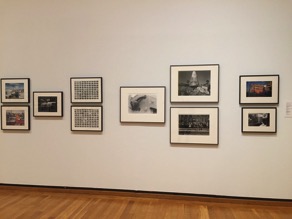
When asked about the spacing of images, Inselmann commented on how they grouped the images for her show. She was away during the physical set up of the show, and as a result the spacing between images is not as she had envisioned. The three images in the middle of the set of four images, on the right, and the set of two images, on the left, are easy to find because they have such a large spacing that separates them from the other groups of images. These photographs were all taken by the same photographer, hence why they are grouped. However, because Inselmann was not present during the physical set up of the show, she was not able to space the images, and as a result the space between the grouping of the photographs is, according to Inselman, too large.
Not only did Inselmann teach the class about the curating process, she also gave us advice. Inselman advised the class to think of the curating process as similar to writing. When curators being they select many images as their draft. Then they being to categorize these images, and they start to edit down the number of photographs or pieces of art in the show. This process, similar to the editing process, continues until the show is finally curated, or published. Inselmann also advised that in the editing process the curators cannot be too attached to the images. Already students have become attached to images, so it will be interesting to see whether people become more open as we continue to curate our show. When asked about working with others to create an exhibit, Inslemann said that co-curating is difficult and it is something that she never wants to do again in her career.
Continuing on, it will be interesting to see how much of the advice from Inselman will by applied, and how our class can learn from some of the reflections that she offered from her show. Though we have completed the selection process, many tips from the interview are still applicable to our exhibit. We are lucky and grateful to have had the opportunity to meet with a professional curator, and hopefully this will help our class organize a cohesive and refined exhibit in the upcoming month.


